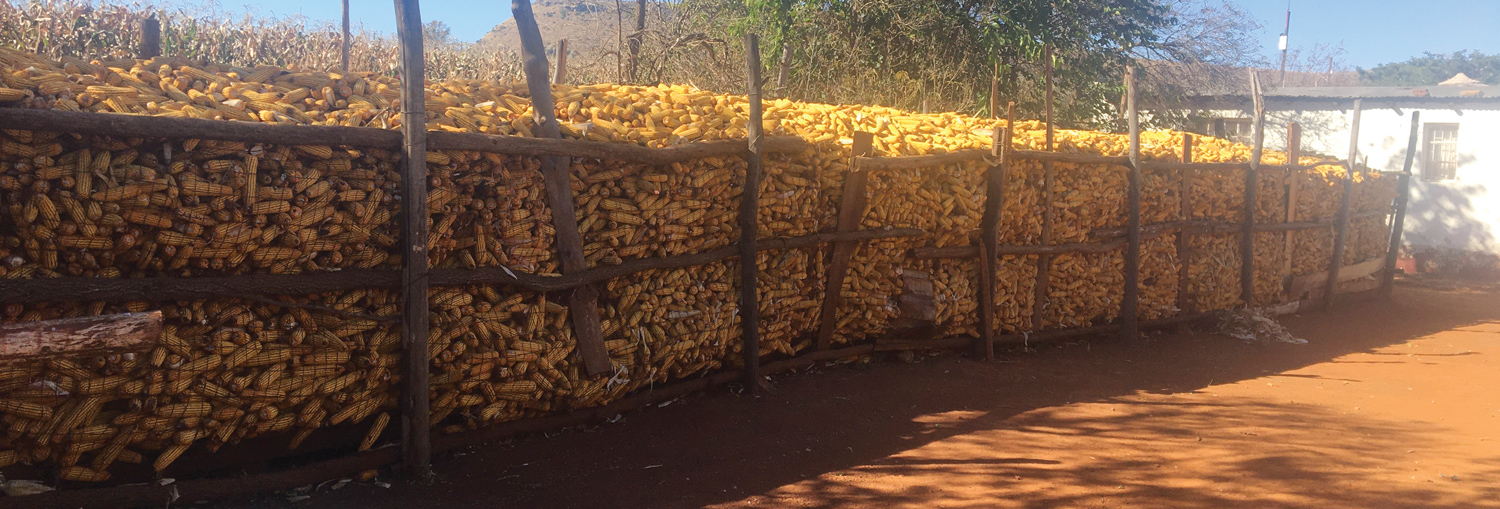July 2025
GRAIN THAT IS STORED IN BULK OR EVEN FOR FAMILY USE AT HOME, CAN ATTRACT INSECTS, PESTS AND OFTEN ALSO FUNGAL INFECTIONS. THIS CAN HAVE A DEVASTATING IMPACT ON THE GRAIN’S QUALITY AND VOLUME. TO STORE MAIZE SAFELY, ENSURE THAT PROPER DRYING TAKES PLACE, USING APPROPRIATE CONTAINERS AND CONTROLLING THE TEMPERATURE.
Did you know that one of the most serious yield losses in developing countries is due to post-harvest losses? Although maize can be stored for a considerable period in an unprocessed form without deteriorating, it should be stored in well-ventilated, dry areas to protect it against pests, rodents and moisture.
Mould occurs if the grain was not dry enough at harvesting, or if it is exposed to high humidity or moisture due to poor storage management. Fungal infections will cause rot and the development of aflatoxins. These mycotoxins are poisonous to livestock and can even cause serious health issues for humans. Mycotoxins are a real threat to consumers of maize products and livestock, but with the correct safety measures and efficient storage in place, it’s a threat that can be managed.

GUIDELINES FOR GOOD STORAGE CONDITIONS
STEPS TO CONTROL PESTS
A comprehensive strategy is needed to control insects in stored maize effectively as 25% of all stored grain worldwide, is lost annually to damage caused by insects. This makes fumigation a necessity.
For smaller farmers, Jerry Mthombothi, regional development manager at PGP’s Mbombela Office, says phostoxin tablets (which contains aluminum phosphide) can be used to prevent weevil infestation. This product can also be used to control rodents. Please remember to wear protective clothing when using any pesticides. Regularly inspect the stored maize for insects and rodents, and take steps to control any infestations.
According to Gerhard Verdoorn, operations and stewardship manager at CropLife, controlling stored grain pests is a specialised field of pest control. ‘The greater the volume, the more specialised the treatment becomes. For a small-scale farmer, storing a few bags of grain for own use, it is possible to treat the bags with a deltamethrin/piperonyl butoxide spray to fend off undesired insect pests.’ Just remember not to spray directly on to the product. In silos – which may house as much as 8 000 tons of grain – spray treatment is not a feasible option and fumigation is about the only viable treatment protocol to remove stored grain pests.
Implementing these strategies can significantly reduce the risk of insect infestation in your stored maize. Regular inspection of the maize and storage area is also essential.
REFERENCES
https://www.fao.org/4/t1838e/T1838E04.htm#Who%20stores%20and%20why
https://www.roff.co.za/blogs/blog/an-introduction-to-insect-infestation?_pos=1&_sid=6978b2f02&_ss=r
https://www.roff.co.za/blogs/blog/effective-grain-storage-to-manage-maize-supp
Publication: July 2025
Section: Pula/Imvula
Author: COMPILED BY THE PULA EDITORIAL TEAM